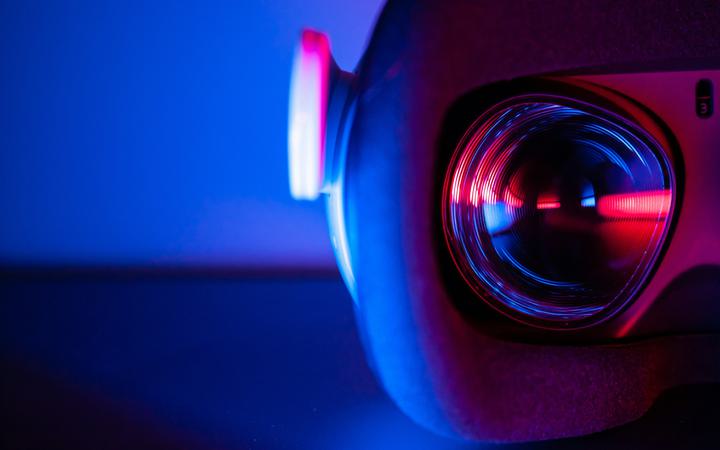How has virtual reality gone wireless?

Since 2016, the two main brands dominating the consumer virtual reality (VR) market have been Oculus and HTC. This trend looks set to continue for the foreseeable future, with innovation in VR having progressed rapidly over the past three years.
2016: Rift and Vive
Released in March 2016, Oculus’ Rift headset was the first to hit consumer markets, shortly followed by HTC’s Vive a few months later. Both headsets work in similar ways, sporting a pair of monitors in front of the user’s face, lenses to focus warped images on the monitors and the need to connect via a cable to a computer, which provides image data to the monitors.
Mounted in appropriate locations around the user must be either an array of sensors (Rift) or light sources (Vive). These track corresponding sources or sensors on the headset to coordinate what’s displayed with the motion of the user’s head. This provides ‘six degrees of freedom’ (6DoF) tracking — three axes of rotation and three of translation. In other words, the user can both move and look around freely in VR.
2019: Rift S, Quest and Vive Cosmos
All of this means that, to enjoy the Rift or the Vive, you have to work within fairly restrictive requirements. However, this all changed in May this year when Oculus added two more VR headsets to its line-up — the Rift S and the Quest. HTC has announced the imminent release of its Vive Cosmos later in 2019 and these new headsets don’t require external sensors to provide the all-important 6DoF — a significant step forwards.
So what approach have Oculus and HTC taken to achieve such innovative wireless systems in just three years?
Out(side) with the old, in(side) with the new
The Rift and the Vive rely on hardware outside of the headset to tell it where it is in relation to the hardware, and therefore to the environment. This is referred to as ‘outside-in’ tracking.
In contrast, the Rift S, Quest and Vive Cosmos have cameras integrated into the headsets, pointing outward towards the environment. Image processing software analyses what the cameras see around the headset, detecting edges, corners and other contrasting features that the software uses to build a model of the environment in real-time from the inside-out.
Multiple cameras examine the environment simultaneously and since the headset knows the relative positions and orientations of the cameras, the processing software can combine the information gathered by the cameras (much like how our brains use images from each of our eyes) to perceive depth. This enables the headset to track where it is in relation to the image built by the processing software, and therefore the environment. This is called ‘inside-out’ tracking — and no external hardware is required.
The Quest has even gone one step further by integrating a CPU, memory and storage into the headset itself. This means that it doesn’t require a permanent, wired connection to a PC. Oculus has therefore achieved a truly wireless headset for the commercial market.
As a VR enthusiast, I look forward to seeing further innovation as VR headsets become more accessible and popular, Google enters the consumer VR arena and a growing set of use cases becomes apparent. For example, Microsoft appears to be focussing on enterprise and even military applications with its HoloLens, and many companies are developing software for education, architecture, healthcare and even shopping.
If you’re innovating in virtual, augmented or mixed reality and would like to discuss how to protect and exploit your intellectual property, feel free to get in touch with us.






